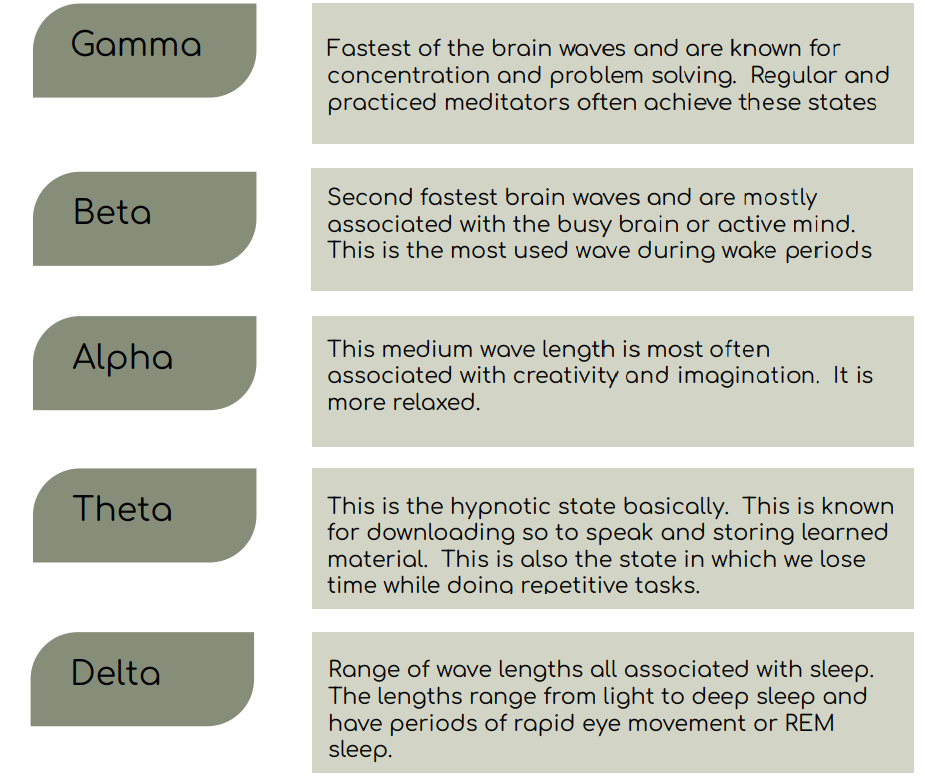Hypnosis gets a bad reputation but it is undeserved. Hypnosis can be an amazing tool in self-help.
I want talk about one of my favorite subjects, hypnosis. I use hypnosis with almost all of my clients. Now it’s not mandatory, but once I explain it, many clients say, “Yeah. Sign me up.” And I’ve used it in 100% of all of my coursework from a mini workshop to a full for full therapy without a therapist course, I use hypnosis. Why? Because it works.
Let’s start with the most usual questions and myths that I’ve heard over the years about hypnosis. Let’s get started.
If you would like to watch the video on YouTube instead, Click HERE.
Myths and Questions About Hypnosis
Number 1: Will I be in an altered state? No. Hypnotic state is a natural state that we go through several times per day, especially as we’re waking up or going to sleep at night.
Number 2: Will I cluck like a chicken, or will I bark when I see the color purple? Well, no. Stage hypnotists make a living with the illusion of hypnosis.
Number 3: What all issues can hypnotherapy work for? Hypnotherapy can work for pain, whether emotional or physical, such as depression, anxiety, flashbacks, phobias, and fears, and it can help with behavioral changes like weight loss, sleep, addiction, or public speaking, test anxiety, those sorts of things. So depending on the nature of the problem will depend on the number of sessions. That’s the only difference, but it does work.
Number 4: Can hypnotherapy be done as part of therapy? I do it all the time. Yes.
Number 5: Can hypnosis help retrieve memories? Absolutely no way. No ethical hypnotherapist will claim to retrieve so called lost memories. Now hypnosis can help remember a detail in existing or known memory, but due to the suggestive nature, any so-called retrieved memory may simply be created memory based on what the person thinks may be in the lost memory.
What about past life regressions? Fun in a party, but there isn’t any ethical therapeutic goal in which remembering a past life would be particularly useful.
Number 7: What if I can’t be hypnotized? Okay. People have varying degrees of suggestibility. True. However, every person with a properly functioning brain goes in and out of hypnotic states every single day. Some people visualize better than others, and hypnosis utilizes our brain’s ability to imagine or visualize, but everybody can be hypnotized. Why? Because everybody is hypnotized every day with a normal functioning brain.
Number 8: Will hypnosis make me into something I’m not? Hypnotherapists hear things like, can I cluck like a chicken or bark like a dog? That hypnotic state of mind is one in which the mind takes in information as fact, which is very helpful when making suggestions about, say, stop smoking or not responding to pain or anxiety. That said, we all have the ability to reject any suggestion.
So if we don’t want to bark like a dog when you hear the color the word purple, you won’t. Simple as that.
Number 9: I cannot be hypnotized. This myth stems from the idea that hypnosis somehow takes us into some altered or unnatural state. The fact is that we go in and out of hypnosis several times a day, especially when waking up or going to sleep at night. The best time to study or learn something new is upon waking or right before falling asleep as we go through that normal hypnotic state. Now other times we’ll go through these normal hypnotic states is anytime during very stressful moments and during our regular normal circadian rhythm.
Number 10: This is fairly rare and that is that someone in hypnosis can be taken over by the devil. The idea that somehow hypnosis is a spiritual experience is fairly common, but there is absolutely no evidence in the research indicating that there is any susceptibility to paranormal experiences while in a state of hypnosis, that very normal brain state. I’ve had people ask to bring in a family member, personal friend, or spiritual coach, pastor, to be with them during a formal hypnosis. And during hypnosis, clients have had spiritual icons or symbols, animals, as part of their visualizations. But there is no scientific evidence, and I’ve never had any experience of any negative paranormal experience during hypnosis.
Number 11: Will I go into a trance, or will I be asleep? Some hypnosis will refer to the hypnotic state as a trance. I don’t like that because of all the negative connotations. The body is unmoving and relaxed but the brain is active. In fact, if a fire alarm go were to go off, clients under hypnosis will respond as though they would anytime they would hear a fire alarm.
Number 12: What if I get stuck in a hypnosis? At the end, the hypnotist generally says I’m going to count to 3. And when I say the number 3, you’re going to open your eyes feeling alert and awake and ready for the rest of your day. Now this is only a means by which to indicate to the mind that we’re done. Now I could just simply say, open your eyes or say, we’re done. Even when connections to online hypnosis sessions are broken, the client opens their eyes, reconnects and we continue.
Number 13: Can hypnosis be done in televideo? Yes. Absolutely. Now as long as there is a stable connection for audio and video so that I can see the upper body at least and more of the client. And the client is in a comfortable, preferably quiet place and can hear me.
Number 14: Is hypnosis only a short term solution? Absolutely no. The effects can be very, very long lasting. I was in a hypnosis conference and the hypnotist doing the presentation talked about how he overcame fear of public speaking with hypnosis. He did hypnosis while in college, and he said thereafter, he hasn’t had any issues. At the time he was doing this conference, he was in his 50s. So you figure he was in his twenties in college, in his fifties, so 30 plus years? Yes. It works.
So there you have it. The top myths surrounding hypnosis. Now my next episode, I’m gonna talk about why is hypnosis in therapy, and why is it very helpful for self improvement programs. So stay tuned, and thank you.
Why use hypnosis?
So why use it? It works. Hypnosis leads to change faster.
And why is that? So let’s talk about what hypnosis is. Most all living things on the planet respond to the day cycle which is called the circadian rhythm. The circadian rhythm is the body’s 24 hour clock, and these rhythms are both physical, mental, and behavioral changes that follow this 24 hour cycle. It’s usually with the sun.
Would you prefer to watch the video on YouTube? Click HERE.
That’s why people who work nights tend to have a lot of issues with their clock, so to speak. And they respond primarily to light and dark and affect most living thing, including including animals, plants, and microbes.
Wave Lengths
Now the brain has different electrical charges at different wavelengths which has been mapped out. Many of these waves occur simultaneously, but depending on the activity and the region of the brain, often one way’s length will dominate. And now hypnotist utilize the brain’s natural learning state of theta because we don’t have to believe something in this state and learn it quite quickly. Think about a kid and when they’re very young, they absorb knowledge.
Gamma is the fastest of the brain waves and are known for concentration and problem solving. Regular and practice meditators will often achieve these states. They’re very fast and can be short in duration.
Beta: Now this is the 2nd fastest brainwave and it’s mostly associated with the busy brain or the active mind. This is the wavelength associated with problem solving, active learning and discriminates information. Beta is much like the keeper of the gate, so to speak.
Now alpha, this is a medium wavelength, and it’s most associated with creativity and imagination. And it’s often more relaxed. Therapists may encourage clients to color or do other arts and crafts, hobbies because it’s nice, relaxing, and it gets the brain to drop out of beta and into an alpha creative and imaginative state. This is also what hypnotists use during inductions and deepeners to have a person move out of the beta and towards theta in order to get beyond the keeper at the gate, so to speak.
Theta. This is the hypnotic state, basically. It is known as the downloading state, so to speak, and it’s where our brain is storing learned material and moving it to long term storage This is also a state in which we can lose time doing repetitive tasks. Have you ever had the experience you’re driving along on a route you’ve been on many, many times, and then you get to where you’re at and don’t have a memory of the drive? This state is also one in which a hypnotist can make suggestions because it goes straight into the mind as a fact. So believability is not required.
So for example, let’s say I’m helping somebody quit smoking. And I say, “Cigarettes are poison wrapped in white paper.” If the person is in theta state, the brain will now believe that cigarettes are poison wrapped in white paper.
Now we can reject that. Someone may think, “I don’t want to quit smoking.” Then they may ignore suggestions or other and sometimes creative ways to “not hear” the suggestion.
Now the last state is delta. Now these are a range of wavelengths all associated with sleep. And the lengths range from light to deep sleep and have periods of rapid eye movement or REM sleep.

Want to Learn More?
If you would like to learn more about therapy one on one? Contact me for a session here.
Would you like to learn more about trauma and how it affects us? Click here for the free webinar and yes, it is free.
To see the entire course listings, please click HERE. All courses include hypnosis.
